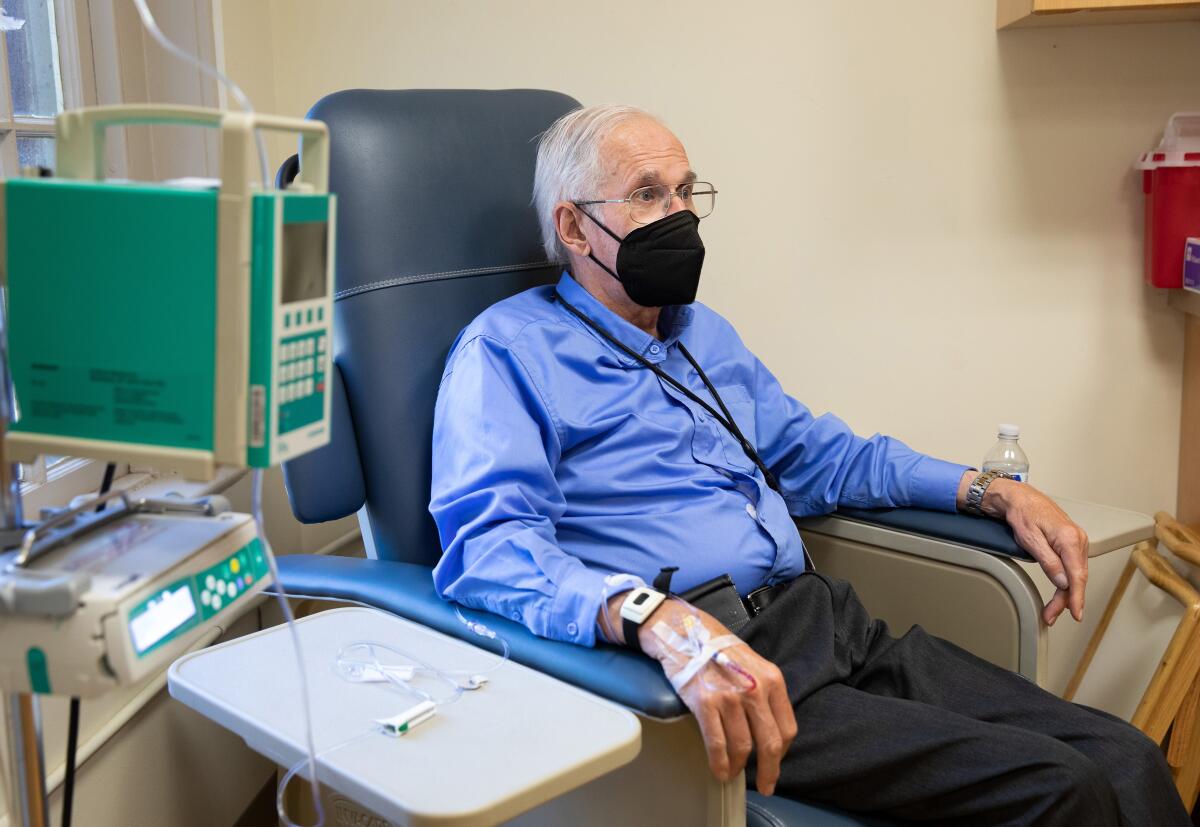The first treatment for Alzheimer’s taught us some hard lessons

- Share via
The Food and Drug Administration’s surprise approval of Aduhelm for the treatment of Alzheimer’s disease last year was a mess on practically every level. Three agency advisors resigned, and skeptical doctors such as myself were left to advise patients — all desperate for hope — that, yes, it is a treatment option but, no, we have no idea whether it will work.
And by the way, it is extraordinarily expensive.
This is not where you want to be when dealing with this mysterious and relentless disease that takes a person’s life only after stripping away memories and every other vestige of who we are as individuals.
But this seemingly rash act by the FDA, followed by a sudden retreat by the Centers for Medicare & Medicaid Services last month to cover Aduhelm’s use only in clinical trials, may end up having an unforeseen and long-lasting benefit. Because this was the first drug ever prescribed to fight the progression of Alzheimer’s, it revealed just how much work the medical community still needs to do to prepare itself to treat Alzheimer’s patients, not just study them.
We need to create a sprawling infrastructure — an entire medical culture, frankly — to accommodate and help the approximately 6 million Americans with Alzheimer’s. And we had better do it fast, because several promising drugs are wending their way through the approval process.
Just as COVID-19 showed us how society was not ready for a pandemic, but prepared us for the next one, so too has Aduhelm shown us what needs to be done to prepare for the next Alzheimer’s drug. It was, in a sense, a trial run.
What did we learn? We don’t have enough clinicians who specialize in Alzheimer’s or doctors with neurological expertise. We don’t have panels to determine treatment options, such as hospital multispecialty boards do for cancer patients. We don’t have enough infusion centers to give patients these drugs, which like Aduhelm will most likely have to be delivered intravenously. We don’t have transportation systems to get patients without means to these centers regularly.
We are not ready. But we’ve got to be.
Aduhelm was never promised to be a cure. Rather, the drug is designed to halt and reverse the growth of sticky amyloid plaques in the brain that are thought by many to cause Alzheimer’s debilitating effects. It seeks to flatten the curve of symptoms, to use a pandemic-era phrase.
How do you measure its success? When is the cost — just lowered to $28,000 a year, from $56,000 — worth it? Who decides?
Aduhelm’s approval sent us all scrambling. Those of us who’d been following its tortured journey — in 2019, for example, trials were stopped because it showed no signs of working — never imagined that we’d have to turn on a dime and get all the necessary components in place to get it prescribed to everyone who was eligible for it; at UCLA Health, this meant quite literally tens of thousands of people.
We had to pivot, as many other centers did, from an academic practice to a community practice practically overnight. This was especially challenging because many primary care doctors are not qualified to treat these patients and this infinitely complex malady.
Because there has never been any treatment for this disease, the doctors in the field today came to do research. With the approval of Aduhelm, a lot of lab scientists found themselves preparing to do a lot more clinical work than they signed up for. We need to start a pipeline of qualified Alzheimer’s clinicians now, because more treatments are coming.
The new drugs on the horizon are also designed to slow the spread of amyloid plaques. They are donanemab from Eli Lilly, lecanemab from Eisai/Biogen and gantenerumab from Roche/Genentech.
Eisai/Biogen has already applied for a marketing license, citing data from its Phase II trial that show strong plaque reduction. The other two companies are expected to follow suit soon. Although in the early stages of trials, one or more of these drugs may well prove more effective than Aduhelm, also known as aducanumab.
Of course, research must continue. These drugs don’t pretend to be cures with the ability to undo damage. We will still need all the lab scientists and dedicated medical researchers we can get to find ways, finally, to prevent and reverse the disease.
In the early days of COVID-19, hospitals were caught without enough protective gear, enough ICU beds and enough ventilators. Everyone was running on instinct. By the time Omicron came around, hospitals were far better prepared and knew what to do. This is one reason that there were far fewer deaths with this latest surge of infections.
Same goes for Aduhelm and the lessons we learned. We aren’t ready yet, but thanks to this trial run, we now know what we have to do to get ready.
Keith Vossel is the director of the Mary S. Easton Center for Alzheimer’s Disease Research at UCLA.
More to Read
A cure for the common opinion
Get thought-provoking perspectives with our weekly newsletter.
You may occasionally receive promotional content from the Los Angeles Times.









